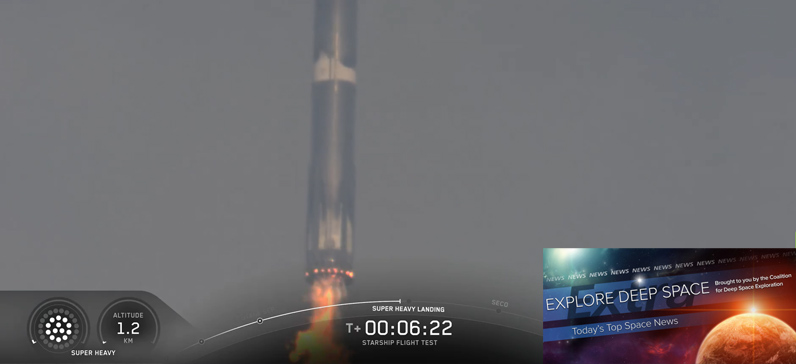Here is a list of news that were published in our Newsletter the week of October 13, 2025:
Human Space Exploration
- Orion spacecraft arrives at VAB ahead of stacking for Artemis II;
- Russian cosmonauts install semiconductor experiment, jettison old HDTV camera during spacewalk outside ISS;
- Artemis Accords nations mark fifth anniversary;
- New space debris shield? Satellites and astronauts could suit up in novel ‘Space Armor’;
- India sets sights on 2040 for crewed Moon mission, ISRO chief announces after PM Modi’s call;
- Isaacman back in the running for NASA Administrator;
- NASA has a wild plan to return astronauts to the Moon. Here’s why experts are starting to worry;
- Another successful Starship test flight as SpaceX readies a new version;
Space Science
- We were wrong about how the Moon’s largest and oldest crater formed and that’s great news for NASA’s next lunar landing;
- Two green comets shine bright. How to spot them in the night sky;
- Solar wind tears a chunk from Comet Lemmon’s tail in incredible new astrophotography images;
- A new attempt to explain the accelerated expansion of the universe;
- Rare comet older than the Sun seen by Mars orbiters;
- Cosmic dust could have sparked life on Earth;
- Uranus and Neptune may not be ‘ice giants’ after all, new research suggests;
- Is the universe infinite, or does it have a limit?
- Astronomers find mystery dark object in distant universe;
- Saturn’s moon Mimas may have an ocean and a future spacecraft could find it;
- Deep space exploration as NASA’s SPHEREx maps the galaxies;
- Could we really turn Mars green?
Opinion
- The Mars moment: Why now is the time to build the future
In an op-ed, Peter Beck, founder and CEO of Rocket Lab, underscores the need to begin investment in long term infrastructure now to prepare for the human exploration of Mars that leads to a long term human presence. That commitment begins with the funding and execution of NASA’s Mars Telecommunications Orbiter (MTO), a communications satellite. “Without it, future missions risk operating in isolation, with limited data return, degraded situational awareness and higher safety risks for astronauts. The time to act is before those missions launch, not after they arrive,” Beck contends. And NASA is. MTO funding was included in the One Big Beautiful Bill signed into law in July. Though enactment still awaits, NASA’s proposed budget for 2026 also includes more than $1 billion for a Mars commercial payload delivery initiative and demonstration of a human entry, descent and landing technology as well as communications relay assets.
Other News
- A new private Moon lander rises: Impulse Space throws its hat into the lunar ring;
- Foldable solar sails could help with aerobraking and atmospheric reentry;
- DAF approves changes to Falcon launch operations at Vandenberg SFB;
- The CMEs are coming (updated);
- Modular robots could both explore off-world and build infrastructure;
- U.S. Space Force picks Blue Origin bid for expanding satellite processing at Cape Canaveral;
Subscribe to our Daily Newsletter:
Don’t miss the latest developments in space policy, science, and exploration with Deep Space Extra, delivered directly to your inbox from Monday to Friday.
|
|

